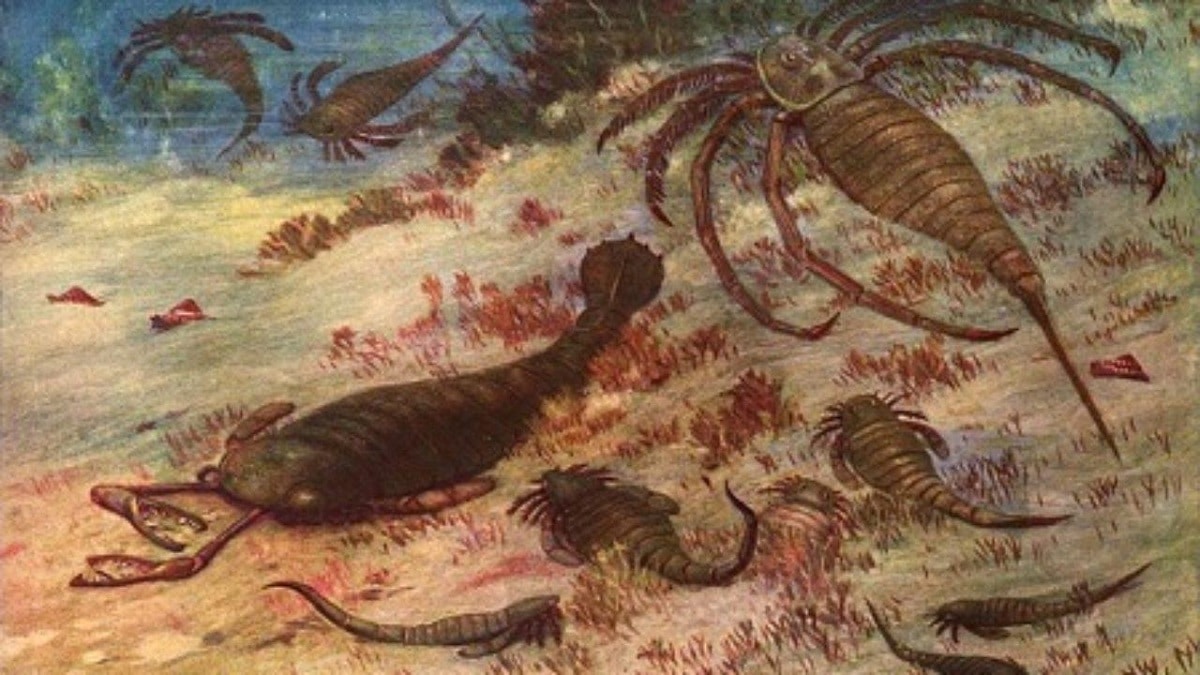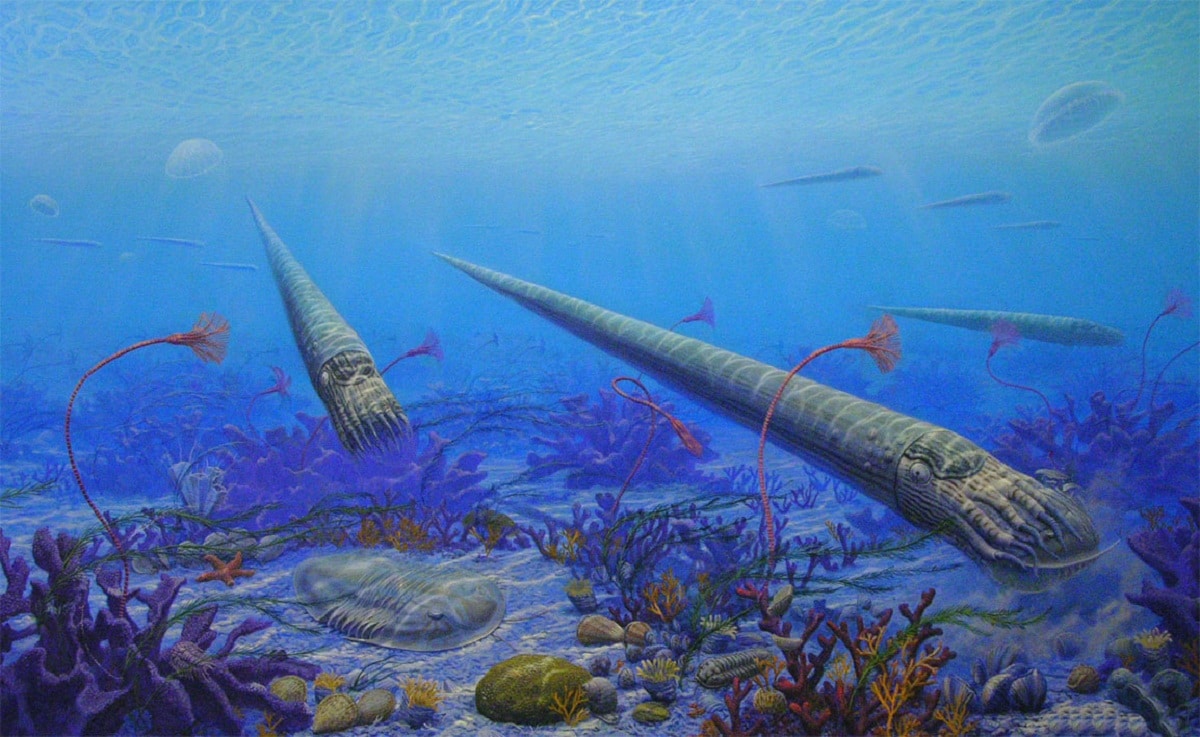
The Paleozoic era had about six periods and one of them is the Ordovician period. It is one of the periods that is located immediately after the Cambrian period and before the Silurian period. It was characterized mainly by having elevated sea levels that caused a proliferation of marine life and ecosystems. The Ordovician fauna had a drastic reduction in biodiversity at the end of the period as a result of an extinction event.
In this article we are going to tell you everything you need to know about the Ordovician fauna and its importance.
Characteristics of the Ordovician period

Before knowing the animals that dominated the fauna of the Ordovician, we are going to know what were the general characteristics of this period of time. It lasted approximately 21 million years with important climatic variations between its beginning and the end. At the beginning of the period there were rather high temperatures, but as time passed and with a series of environmental transformations, the temperature decreased significantly. It had a period of ice age.
One of the characteristics for which the Ordovician period stands out is the extinction event that wiped out 85% of the species of living beings, especially marine ecosystems. Regarding the geology of the Ordovician period, we find that the planet was divided into 4 supercontinents: Gondwana (the largest of all), Siberia, Laurentia and Baltica. The fossils that have been recovered from rocks from this period present mainly sedimentary rocks.
As for the climate, we see that it was warm and tropical at the beginning. Some temperatures reached values of 60 degrees Celsius. However, at the end of this period the temperatures decreased in such a way that there was an important glaciation. This glaciation mainly affected the continent of Gondwana. At that time, this continent was in the south of the planet. The causes of glaciation are still unknown, but many speak of a decrease in carbon dioxide concentrations. Studies are still being done to find out the cause.
Ordovician life

During the Ordovician period there was a great diversification of life. Especially the one that lives in the sea was developed. We are going to do a brief review on the flora of the Ordovician. Considering that almost all life developed in the marine habitat, it is important to note that there were representatives from the Plantae kingdom mainly and some from the Fungi kingdom.
Green algae proliferated in the seas and some species of fungi were present that fulfilled the function as in any ecosystem: to decompose and disintegrate dead organic matter. There were hardly any terrestrial ecosystems with plants, although some small ones began to colonize the mainland. These are very primitive basic plants that were not vascular. It didn't even have the xylem and phloem system. Because of this, they had to stay very close to the water to make this resource available.
Ordovician fauna

We are going to describe what the Ordovician fauna was and its main characteristics. It must be emphasized that the Ordovician fauna was really abundant in the oceans. There was a great diversity of animals ranging from smaller and primitive to more evolved and complex ones.
We start with the arthropods. It is a fairly abundant edge during the Ordovician. Within the representatives of this edge we can mention brachiopods, trilobites and sea scorpions. These had a number of specimens and species that circulated through the seas of this time. There were also some species of crustaceans.
As for mollusks, they underwent a great evolutionary expansion. In some seas there were nautiloid cephalopods, bivalves and gastropods. Gastropods moved to the seashore, but had to return to live in the marine habitat as they had gill respiration. This fact did not mean that they could be dispersed throughout the terrestrial habitat. Although fish existed since the Cambrian, jawed fish such as the coccosteus began to appear during the Ordovician fauna.
The corals were not appreciated alone, but began to group. During this period, the first known coral reefs were generated. Some varieties of sponges had already been diversifying from the previous period.
Mass extinction of the Ordovician fauna
As we have mentioned before, one of the characteristics that stands out in this period of time is one of the extinctions that wiped out 85% of the fauna existing at that time. It occurred approximately 444 million years ago with the limit of the Ordovician and Silurian periods. Specialists can only conjecture as to why this extinction happened. It was probably due to changes in the environmental conditions prevailing at that time. For example, is responsible for the extinction the decrease in atmospheric carbon dioxide. This contributed to the decrease in gas and its contribution to the greenhouse effect. As a consequence, there was a decrease in environmental temperature globally.
This decrease in temperatures caused an ice age that mainly affected the supercontinent Gondwana. Only a low percentage of species survived during the glaciation. Another reason why scientists believe there was a mass extinction is because declining sea levels. This process occurred due to the approach of large land masses that existed at that time. This caused the closure of the Lapetus ocean in its entirety. Since most of the existing species were in marine habitats, it caused or the extinction of most of them.
Glaciation is the main cause par excellence of this extinction. It is believed that it was related to the decrease in atmospheric carbon dioxide. Those that survived managed to adapt to decreases in temperature and changes in environmental conditions. The last reason scientists think the extinction occurred was because of a supernova explosion. This theory was developed in the first decade of the XNUMXst century and says that the cause was that a supernova explosion occurred in space. This resulted in the earth being flooded with gamma rays from the explosion.
I hope that with this information you can learn more about the fauna of the Ordovician.